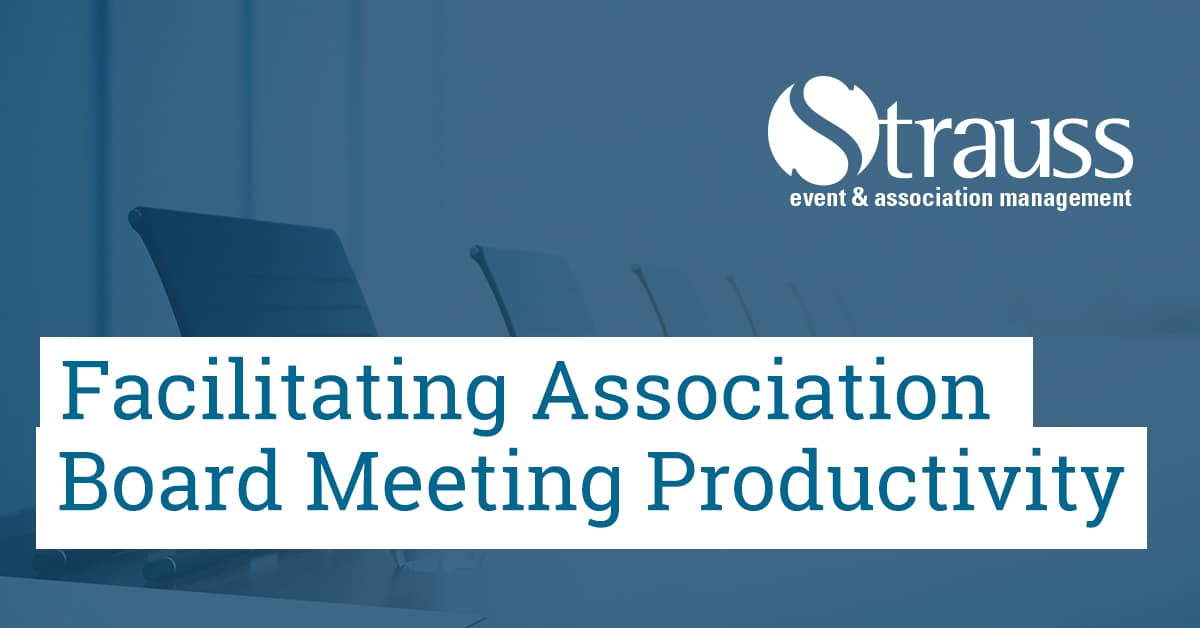As an association leader, have you ever been asked to make a decision, but you were provided with too many options to choose from? This can happen in everyday life too. Whether it be choosing a dish from a multi-paged menu or selecting a new show to watch on Netflix; these decisions can often leave you feeling overwhelmed.
The same holds true when providing association board members with too many options regarding an upcoming board meeting. Whether it’s sharing a large number of files in an email, providing printed documents at the meeting, or creating an agenda with too many items; all of these situations can inundate a board member’s focus, making it difficult to take everything in.
To avoid this, try providing less information which can lead to a more productive association board meeting. Below are three methods to accomplish this.
Sharing Fewer Email Attachments
When sending the agenda, there are often multiple documents that accompany it. This means that the board is not only receiving an electronic copy of the agenda, but a myriad of documents that go along with it. This can be overwhelming for board members.
To avoid drowning directors in materials, consider saving all documents using a cloud-based software. Not only does this ensure that board documents are secured, independent of issues you may experience with your computer, but you can also create links that lead to specific folders.
This would allow you to attach only the agenda in the email and provide a link to all meeting documents. Now when board members open the communication regarding the upcoming meeting, they will be able to focus on the agenda first and open the related documents at their leisure.
To make it more effortless, ensure that all files are appropriately named so that they are easy to identify. For more on cloud storage and structuring association folders, please visit my colleague’s blog: Did I Save That? – Increase Efficiency with A Standardized File Structure.
Forgoing Board Meeting Printouts
Bringing printed documents to an association board meeting is not only a cumbersome task for association staff, but it can also result in some disorganization and confusion on the part of board members.
Even if the printed pages are strategically put in order in accordance with the agenda when placed around the board room table, very often items on the agenda may get shuffled due to some discussions taking more or less time than expected, causing the meeting to fall off schedule.
This means that the time it took to organize the documents can very easily be for nothing. Board members will be left sorting through the materials looking for the appropriate document which can be both frustrating and time-consuming.
Nowadays, it is not unusual for board members to bring laptop computers or tablets with them to meetings. They now conveniently have access to all board meeting documents at their fingertips using the link provided through the cloud-based software as described above.
One piece, however, that should always be printed is the formal agenda. This allows directors to refer to upcoming agenda items to know exactly where the meeting is headed without having to navigate between windows on their electronic devices.
For more on how to construct a board meeting agenda, please visit my previous blog: The Board Meeting Menu: Tips on How to Create a Streamlined Agenda for a Successful Association Board Meeting.
Condensing the Board Meeting Agenda
Minimizing the number of items on an agenda does not pertain to all association board meetings, but it can be a good method to use occasionally to allow for board members to focus on a specific topic. This could even mean devoting an entire meeting to a single agenda item.
A good example of this would be a meeting dedicated to strategic planning. If it is the only topic being discussed, strategic planning can be discussed with a much broader scope and more can be accomplished. This could include reviewing the association’s strategic plan, reflecting on the past year, or preparing for the future.
Often, these topics will be discussed independently on a more complex agenda, but directors would merely scratch the surface because of the impending list of agenda items remaining. Agendas with fewer topics permit directors to centralize on important and time-sensitive topics and come out of the meeting with stronger direction.
For more on strategic planning, please visit my colleague’s blog: Strategic Planning for Associations: How Much and How Often?.
As you can see, providing more for association board meetings does not always give you the outcome you desire. By cutting down on the information presented to the board of directors, when done correctly, you can increase focus and productivity at board meetings. So the next time you need to prepare for a meeting, remember that less is more.

